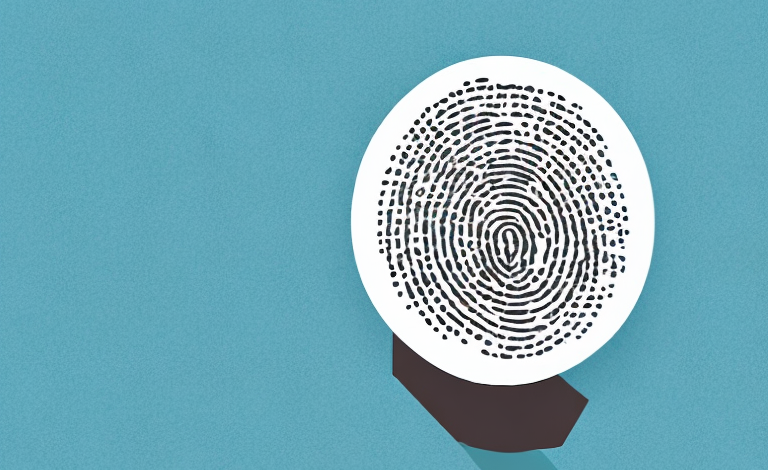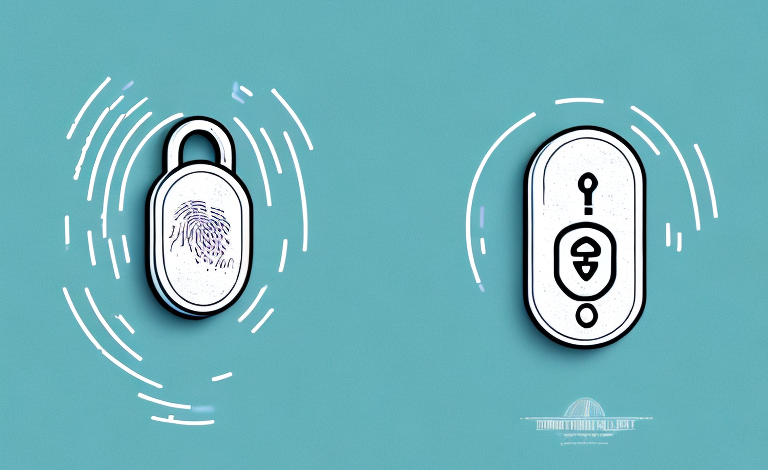In today’s world, our smartphones have become an inseparable part of our lives. We use them for communication, entertainment, shopping and banking, among myriad other things. With biometric security features like fingerprint authentication, accessing our smartphones has gotten easier and faster. However, there are concerns about whether this type of security is secure enough. Specifically, can your fingerprint be stolen from your phone? In this article, we will explore the science behind fingerprint authentication on phones, how phones store fingerprints, types of phones that use fingerprint authentication, the dangers of having your fingerprint stolen, and strategies and alternatives for preventing fingerprint theft.
The science behind fingerprint authentication on phones
Fingerprint authentication is a process that involves capturing an image of the user’s fingerprint and comparing it against a stored fingerprint. The image is usually captured using a capacitive or optical sensor. A capacitive sensor works by measuring the electrical properties of the skin, whereas an optical sensor captures an image of the fingerprint by reflecting light off the surface of the skin. The image is then stored in a secure location on the phone, which is usually the phone’s secure element. This information is used to compare subsequent fingerprint images during authentication.
One of the advantages of fingerprint authentication is its high level of security. Fingerprint patterns are unique to each individual, making it difficult for someone else to replicate the pattern and gain access to the phone. Additionally, the use of biometric authentication, such as fingerprint scanning, eliminates the need for users to remember complex passwords, which can be easily forgotten or hacked.
However, there are also some limitations to fingerprint authentication. For example, if a user has a cut or injury on their finger, the fingerprint may not be recognized by the sensor. Similarly, if the sensor is dirty or damaged, it may not be able to capture an accurate image of the fingerprint. In these cases, users may need to rely on alternative authentication methods, such as a PIN or pattern unlock.
Understanding how phones store fingerprints
When a user registers their fingerprint on a phone, the phone stores an encrypted version of their fingerprint. The phone’s secure element uses a public-private key pair to encrypt the fingerprint data. The public key can be used to encrypt the data, while the private key can be used to decrypt it. This means that no one else can access the fingerprint data on the phone, even if they are able to steal it.
However, it is important to note that not all phones store fingerprint data in the same way. Some phones store the data locally on the device, while others store it on a remote server. Storing the data locally provides an extra layer of security, as it reduces the risk of the data being intercepted during transmission to a remote server.
Additionally, some phones use a combination of fingerprint data and other biometric data, such as facial recognition or iris scanning, to provide even greater security. This multi-factor authentication approach makes it much more difficult for unauthorized users to access the device, as they would need to have both the fingerprint and the other biometric data to gain access.
Types of phones that use fingerprint authentication
Most modern smartphones use fingerprint authentication as one of the primary security features. Apple’s iPhones are equipped with Touch ID or Face ID, which is their proprietary fingerprint and facial recognition technology. Android smartphones use a variety of fingerprint sensors, including capacitive and optical sensors, that are built into the phone’s hardware by different manufacturers. There are also Windows and Blackberry smartphones that offer fingerprint authentication.
In addition to smartphones, fingerprint authentication is also becoming more common in other types of devices. For example, some laptops now come equipped with fingerprint scanners that allow users to log in quickly and securely. This technology is also being integrated into other types of devices, such as smart locks and home security systems.
Fingerprint authentication is not only convenient, but it also provides a high level of security. Unlike passwords, which can be easily forgotten or hacked, fingerprints are unique to each individual and cannot be replicated. As a result, fingerprint authentication is becoming an increasingly popular way to protect sensitive information and secure personal devices.
How hackers can steal your fingerprint from a phone
While phones are generally secure, there are instances where hackers can steal fingerprints from phones. One of the ways hackers can steal fingerprints is through the use of fake fingerprint gel pads. These pads can be used to lift fingerprints from surfaces and can be used to unlock a user’s phone. Another method involves using malware to capture the fingerprint data from the phone’s sensors. This can be done through phishing attacks, where users are tricked into downloading a malware-laced app or clicking on a malicious link.
It is important to note that not all phones have the same level of security when it comes to fingerprint data. Some phones store fingerprint data in an encrypted format, while others store it in plain text. Additionally, some phones have more advanced sensors that can detect fake fingerprints or other attempts at spoofing. It is important for users to research the security features of their phone and take necessary precautions to protect their fingerprint data.
Real-life examples of fingerprint theft from phones
There have been several cases of fingerprint theft from phones in the past. In one instance, a hacker was able to use a fake fingerprint made from gelatin to unlock a secured phone. In another case, a cybersecurity firm was able to capture the fingerprint data from a Samsung Galaxy S5 using a simple photographic technique. These examples demonstrate the importance of implementing robust security practices to prevent fingerprint theft.
Another example of fingerprint theft from phones occurred when a group of researchers were able to create a 3D printed replica of a person’s fingerprint using a photograph taken from a distance of three meters. This replica was then used to unlock the person’s phone. This highlights the need for individuals to be cautious about sharing their personal information, including photographs, on social media and other online platforms.
In addition to the risks of fingerprint theft from phones, there are also concerns about the use of biometric data for surveillance purposes. Governments and law enforcement agencies around the world are increasingly using facial recognition technology and other biometric data to monitor individuals. This has raised concerns about privacy and civil liberties, and has led to calls for greater regulation and oversight of these technologies.
The dangers of having your fingerprint stolen
The dangers of having your fingerprint stolen from your phone are numerous. One of the significant concerns is identity theft. If attackers gain access to your fingerprint data, they can use it for malicious purposes such as accessing your personal information, bank accounts, and other sensitive data that is protected by biometric authentication. Furthermore, fingerprints are not like passwords, which can be changed. Thus stolen fingerprint data is permanent and can be used for nefarious activities for a long time to come.
How to protect your phone from fingerprint theft
There are several ways to protect your phone from fingerprint theft. One of the things you can do is to enable two-factor authentication. This adds another layer of protection to your phone and can prevent attackers from gaining access to your phone even if they have your fingerprint data. You can also ensure that your phone’s operating system and apps are up-to-date with the latest security patches. This can help to prevent vulnerabilities that attackers can exploit. Finally, you should be cautious when downloading apps or clicking on links, especially if they are from unknown sources. This can prevent attackers from installing malware onto your device.
Alternatives to fingerprint authentication on phones
In addition to fingerprint authentication, there are other biometric security options available for smartphones. These include facial recognition, iris, and voice recognition. Facial recognition is a technology similar to fingerprint authentication, but it uses the front-facing camera on the phone to capture an image of the user’s face. Iris recognition uses the unique pattern of the user’s iris to authenticate them on their phone. Voice recognition capabilities are also becoming more commonly available on smartphones. Biometric security options provide users with added convenience while using their phone.
The future of biometric security on smartphones
The use of biometric authentication is becoming increasingly popular, and it is likely to continue to expand in the future. In addition to fingerprint authentication, other forms of biometric authentication like facial and iris recognition are growing in popularity. Furthermore, the development of advanced technologies such as machine learning and artificial intelligence could see the growth of biometric authentication and could ensure that smartphones are even more secure in the future.
Myths and misconceptions about fingerprint authentication on phones
One of the significant myths surrounding fingerprint authentication on phones is that it is 100% secure. This is not true, as hackers can and have been able to gain access to users’ fingerprints in the past. Another misconception is that fingerprints can be changed like passwords. However, fingerprints are non-replaceable, meaning that any stolen fingerprint data can be used to compromise an individual’s identity for extended periods. Users should keep the limitations of fingerprint authentication in mind while using it.
Legal implications of stolen fingerprints from phones
The stealing of personal biometric data, such as fingerprints, can give rise to various issues, including from legal and regulatory perspectives. Countries, such as the EU, have implemented stringent data protection laws such as the General Data Protection Regulation (GDPR), which requires organizations that hold personal data to ensure the protection of the data. Furthermore, if an individual’s fingerprint data is stolen and used for illegal activities, the individual can be held liable for those activities.
Fingerprint theft prevention strategies for phone users
To prevent fingerprint data theft, users should consider implementing several strategies. One, they can periodically review their phone’s security settings, update software that needs to be updated, and be more cautious about where they install apps from. It is best to stick to downloading apps from official app stores only. Two, users should enable two-factor authentication to add an extra layer of security for the phone’s access. Finally, users should keep a regular check on their banking and financial transactions to detect any suspicious activities, thus curbing potential threats.
Debunking common fears surrounding biometric security on smartphones
One common fear surrounding biometric authentication on smartphones is that hackers can easily steal fingerprint data. However, this is not the case if the user follows secure practices such as being cautious about where they download apps from, regularly updating their phone’s security software, and enabling two-factor authentication. Furthermore, biometric authentication provides a more convenient and hassle-free means of securing your phone, as you do not have to remember lengthy passwords to access it.
Conclusion
In conclusion, it is possible for your fingerprint data to be stolen from your phone by determined attackers, but if you follow secure practices, the risks can be significantly lowered. Biometric authentication provides users with a fast and convenient way of securing their phones. However, it is important to keep the limitations of biometric authentication technology in mind while using it. It is our responsibility to keep our phone’s security in check regularly and continue following best practices so that we can use our phones safely and securely.



